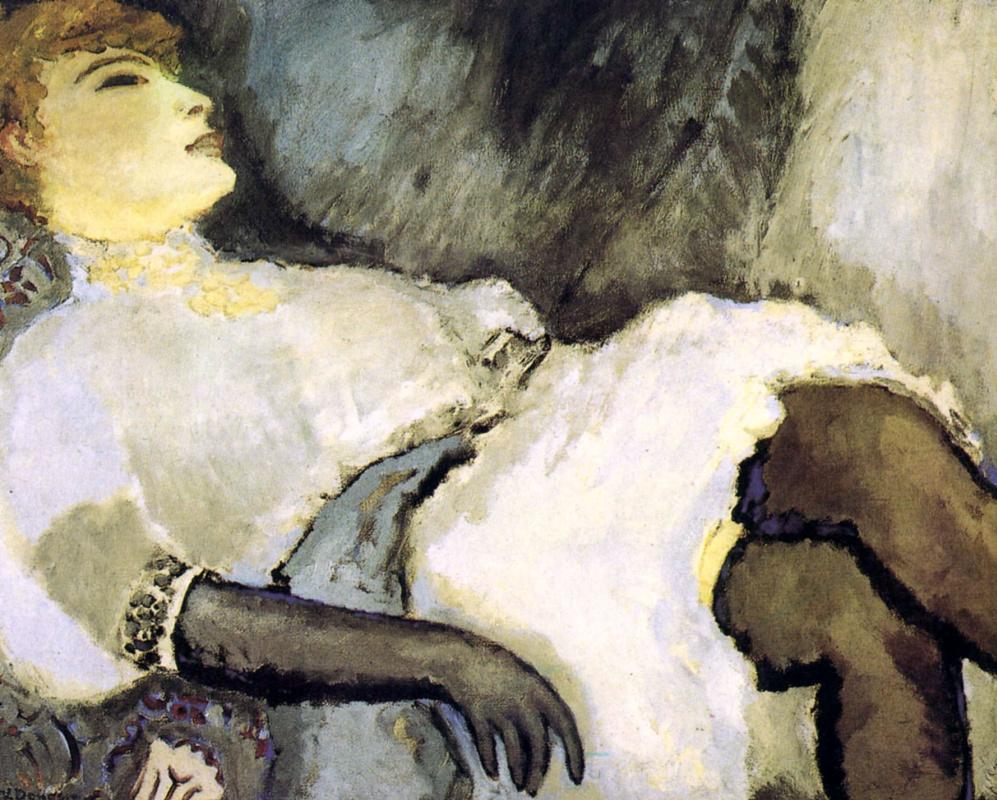log in
Enter site
Login to use Arthive functionality to the maximum
Lady in Black Gloves
Kees Van Dongen • Painting, 1908, 73×91 cm
Description of the artwork «Lady in Black Gloves»
Formally, the Dutch artist Kees van Dongen is considered one of the leading Fauves. At the same time, in 1908 the artist joined the German Expressionist group Die Brücke (The Bridge). These two artistic trends shared the desire to put color at the forefront but differed in their views on what effect it should produce on the viewer.
When in the works by German artists, the clouds inevitably gather and uneasy tension hangs in the air, van Dongen’s paintings are known for their carelessly posing women and the unbearable lightness of being (1, 2, 3). By the way, the artist partly owes his success to women: he loved them; they loved him, and even fed him when the yet unknown Dutchman came to Paris.
Van Dongen seemed to have a special approach to women: both, socialites and demimondaines – cabaret artists and ladies of the night – willingly posed for him. Judging by the liberated pose and the hem of the dress, revealing legs in stockings, the subject of this picture belongs to the latter category of van Dongen’s sitters.
The artist depicts her from a somewhat unusual angle: the figure occupies almost all the canvas and even goes beyond it; there is no eye contact with the model. Perhaps van Dongen had special feelings for the woman or was just carried away by painting, since in no other picture he left so little air to the subject. At that time, the majority of his sitters were cheerful, carelessly chirping girls, but the Lady in Black Gloves seems not to notice the artist's close attention. Maybe that's why he chose for the woman a relatively restrained, cold color palette - to match her feelings.
In the same year of its creation, the canvas was exhibited in Russia at the Golden Fleece Salon (Salon “Zolotoe Runo”) and then became a part of the collection of Sergei Polyakov – a patron and founder of the Scorpion publishing house.
When in the works by German artists, the clouds inevitably gather and uneasy tension hangs in the air, van Dongen’s paintings are known for their carelessly posing women and the unbearable lightness of being (1, 2, 3). By the way, the artist partly owes his success to women: he loved them; they loved him, and even fed him when the yet unknown Dutchman came to Paris.
Van Dongen seemed to have a special approach to women: both, socialites and demimondaines – cabaret artists and ladies of the night – willingly posed for him. Judging by the liberated pose and the hem of the dress, revealing legs in stockings, the subject of this picture belongs to the latter category of van Dongen’s sitters.
The artist depicts her from a somewhat unusual angle: the figure occupies almost all the canvas and even goes beyond it; there is no eye contact with the model. Perhaps van Dongen had special feelings for the woman or was just carried away by painting, since in no other picture he left so little air to the subject. At that time, the majority of his sitters were cheerful, carelessly chirping girls, but the Lady in Black Gloves seems not to notice the artist's close attention. Maybe that's why he chose for the woman a relatively restrained, cold color palette - to match her feelings.
In the same year of its creation, the canvas was exhibited in Russia at the Golden Fleece Salon (Salon “Zolotoe Runo”) and then became a part of the collection of Sergei Polyakov – a patron and founder of the Scorpion publishing house.


